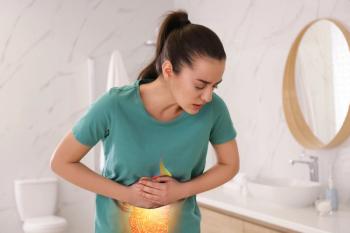
Novel Internet-Based Hospital-to-Home Model for Nutritional Nursing Effective in Patients With CKD
Continual nutrition modification is crucial in patients with moderate to advanced chronic kidney disease (CKD), and more interactive at-home solutions hold potential to improve nutritional nursing models after hospital discharge.
Patients with chronic kidney disease (CKD) can benefit significantly from improving nutritional habits, and nutritional nursing while in the hospital can help teach patients and caregivers the importance of tailored nutrition. A
Previous research has found that patients with moderate to severe CKD are prone to a host of conditions that can affect quality of life and the way nutrients are absorbed. Changing nutritional approaches can help patients improve their quality of life and reduce mortality and disability in CKD, according to study authors.
The current study, which included 120 Chinese patients with CKD, assessed the value of an updated version of the hospital to home (H2H) nutritional management model that aims to inform and assist patients with strategies to improve their nutrition.
In the traditional H2H model, intervention begins during hospital stays when patients and caregivers are educated on the importance of continuing nutritional efforts and follow-ups after discharge. After patients receive discharge guidance, the traditional H2H model includes telephone follow-ups and reminders to make follow-up exam appointments on time. Patients in this conventional system made up the control group.
The updated H2H nutritional nursing model, Internet + H2H, establishes a care management team via the WeChat platform: 1 team leader (ie, head nurse of the section), 1 consultant (ie, the section director), and a team comprised of 1 nephrologist, 5 specialist nurses, and 1 dietitian. All team members are trained in kidney disease nutrition, platform operation, enrollment of patients, and communication skills.
Patient information and laboratory studies were added to the platform after hospital admission. The platform automatically generated 3 meals per day with recipes that updated every 3 days. Members of the care team could answer patient questions. At discharge, a specialist nurse asked that patients and caregivers update the platforms with metrics, includingfinal laboratory indicators and weird, blood pressure, and blood glucose before checking the entries for accuracy.
Once patients were at home, the platform automatically generated recipes, provided education, sent reminders to visit the clinic, and facilitated online consultations. At re-examination appointments, nutritional status and laboratory metrics were assessed and patients were screened for malnutrition and high risk.
A total of 60 patients were in the control group, while the other 60 used the newer Internet+H2H system. To gauge the success of each program, researchers used 320-slice volume CT low-dose perfusion imaging, anthropometry, laboratory biochemical tests, and other survey scores.
Overall, patients saw significant improvement with the Internet+H2H method versus the control group. Arm muscle circumference and triceps skinfold improved significantly, and measures including serum albumin, prealbumin, hemoglobin, and blood urea nitrogen also improved with the novel system versus the control cohort.
Nutritional screening scores also improved, as did health quality assessments and patient satisfaction with the model itself on the Internet+H2H group compared with the control group. After treatment, the group using the novel method also saw improved renal cortex blood flow more so than the control group.
The study compared results of the improved wavelet transform (IWT) algorithm for CT scans with the mean filter denoising algorithm and the orthogonal wavelet denoising algorithm. They found that the mean square error and signal noise ratio values using the IWT algorithm were better.
Taken altogether, the results suggest patient outcomes and satisfaction were improved with the Internet+H2H model versus the conventional H2H method, likely due to the increased individualization of the model. This is in line with past research suggesting the Internet+H2H nutritional nursing model does not have the time and space barriers associated with past models. Therefore, it is more present for patients, even at home where continual nutrition monitoring is still crucial.
In summary, the “Internet + H2H″ nutritional nursing model was more individualized, which can better improve the physical quality of patients with stages 3 to 5 of CKD, improve the psychological state of patients, and further enhance the prognosis of the disease.
Reference
Chen X, Huang X, Yin M. Implementation of hospital-to-home model for nutritional nursing management of patients with chronic kidney disease using artificial intelligence algorithm combined with CT Internet. Contrast Media Mol Imaging. Published online March 27, 2022. doi:10.1155/2022/1183988
Newsletter
Stay ahead of policy, cost, and value—subscribe to AJMC for expert insights at the intersection of clinical care and health economics.








































